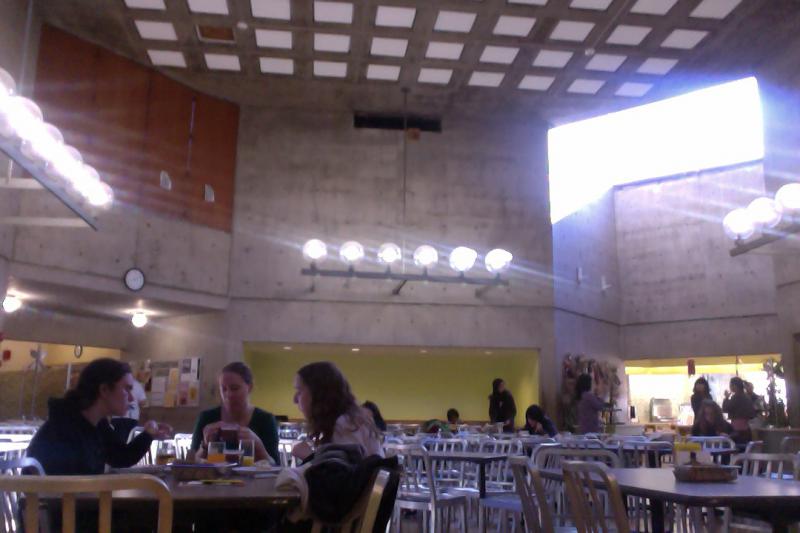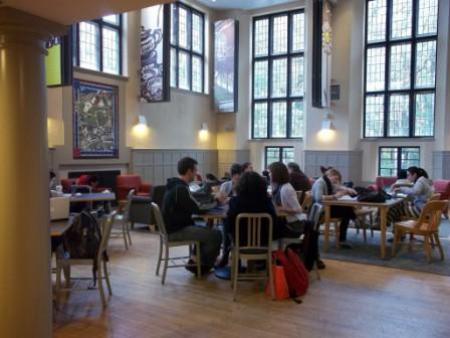Serendip is an independent site partnering with faculty at multiple colleges and universities around the world. Happy exploring!
Blogs

Dear Middleschoolers, Love, Charlie
Dear boys, girls, and those of you who just aren’t quite sure yet (because that is totally cool too),
For many of you, this is a confusing time. Things are growing in places where you aren’t sure if they are supposed to be growing, new places might develop novel smells, and you might start to feel differently. If any of these things apply to you, or if none of these things apply to you, you are still normal. Every body goes through different changes at different speeds and in completely different orders. So if your best friend is growing armpit hair, but you haven’t reached that point yet, don’t worry – we all catch up in the end! I am writing to you, middle-schoolers, because this time can be a bit scary; there are a lot of changes that you can expect in the next couple of years, and a lot of information out there, both true and false, so a quick guide to the next few years seems like a pretty good resource for you right about now. Read on to learn about what makes boys and girls different biologically, some of the changes that you can expect to your body during puberty, how babies are made, and a quick peek at the different categorizations of gender!
Let’s start from the very beginning. How did we get here and what exactly makes girls different from boys?
Space

There is a sense of belonging when it comes to one’s class. People from the same class usually hold a shared understanding of certain values, lifestyles. Being with these people from the same class who can understand these aspects about an individual can provide that individual with a sense of comfort and natural companionship. It’s feelings like this that helps to develop a sense of community and ‘home’.
In consideration to this, in approaching this essay I began to think of what my home meant to me and where I could find it at Bryn Mawr. At my ‘actual’ home, the meal time acted as a valuable retreat for my family. At the table, we would detach from what happened in our external lives and bring the focus to this communal moment. Thus, I decided to write about how mealtime contributes to the relationships within a class and affects interactions between classes and how the space is utilized to foster this growth.

Space
The space that I pick up is the nook on the third floor of Denbigh, my residential hall. As a common space for students living on the third floor, nook is a part of my life: I do my readings at nook, I skype with my parents at nook, and, the most important, it was nook at that I started to learn how to “social” with other students, in an American way. The nook is like cultural classroom, what happened there taught me how to fit myself in a different culture. As you can see in the picture, the nook was decorated as a space for people gathering together and having some casual chatting. In order to celebrate Halloween, it was decorated by using pumpkins, skeletons and sparking lights. More important, I regard the nook as a space for me to learn more about American culture through intellectual conversations or just some casual conversations I have with different people. I think it is nook that helps me fit myself into the new cultural environment.

My Semi-Public Space
I chose the first floor hallway of Denbigh for my space. I spend a lot of time there, working and socializing, so it felt appropriate to consider. After picking it though, I realized that there was quite a dichotomous nature to the hallway, as it belonged to and was used by two different groups of people. During the day, members of the staff work in the hallway, cleaning the dorm itself. In the evenings, it's used by the residents as study and social space. I found the difference between the two uses and groups of people particularly interesting because the hallway is perhaps the one space the groups may intersect.
Reclaiming Space
I chose to take pictures of my room because it is where I spend the most time on campus. I took many shots of different perspectives of the room. After reading passages about M. Carey Thomas, I felt that I did not belong in my room because I was not the typical "Bryn Mawr girl" she was looking for but, I am still a student here. My paper revolves around the spaces that M. Carey Thomas envisioned for the women of Bryn Mawr and how I reclaim and re-shape those spaces to fit my education at Bryn Mawr. Although I reclaimed my space at Bryn Mawr, I still feel a sense of disconnect because M. Carey plays a major role in Bryn Mawr’s history and so many of the women here look up to her. It’s difficult to say whether I will truly feel a whole sense of belonging to the Bryn Mawr community.
P.S.-My pictures are on an attached word document because they exceeded 1 MB so I could not upload them, but check them out!

Who do you think would enjoy and use Serendip?
When we sat down together, your enjoyment of Serendip came through loud and clear (thank you!), as well as how valuable a tool it has been/ is/ will be in your teaching and intellectual lives.
There are other faculty and groups on campus who would undoubtedly benefit from and extend Serendip's experimental, immersive, interdisciplinary approach and philosophy. And who would be fun to work and play with too.
So who do you think would enjoy and use Serendip? Is there anyone you would like to introduce to Serendip, say, for the spring semester to collaborate with you in any small or large way?
Olivia, I loved your idea of using Serendip as a large textual dataset - I would be happy to talk with anyone you know of who might be interested in using it.
Wil and Mike, would you be interested in doing a science education grant proposal? Weecha asked me if Serendip would be available for doing outreach to 4th grades on earth science. (I of course said yes! with hopes of using the materials with Audrey in just a couple years!) Peter B might be able to give you spring or summer funding from HHMI to start off with a pilot project that could be taken to someone other than HHMI.
Alice, who will you be inviting (from campus) to participate in the Breaking Project?
To all of you immersed in collaboration with Parkway (!), do you envision this as extending indefinitely into the future? and are there others on campus who might like to participate in this model of engagement?
The imbalance in our shared space
I chose this image because the Campus Centre was my first stop at Bryn Mawr and the events of my first day within that space affected my expectations of how my experience at Bryn Mawr would unfold. In my paper, I discussed how the current admission status of international students creates a racial imbalance within our shared space. This inequality depletes the amount of cultural capital available to us as an institution and within the classroom. As a natural consequence, we experience more clumping than integration. In addition, there is a dichotomy in the makeup of faculty in comparison to the dining services and housekeeping staff. This situation traces back to what obtained in Bryn Mawr’s early years. Therefore, Bryn Mawr College is still quite classed in terms of the racial diversity of its population and the roles they perform on campus. I concluded by indicating that though we have made progress from what obtained 40 years ago, there is much room for improvement.







